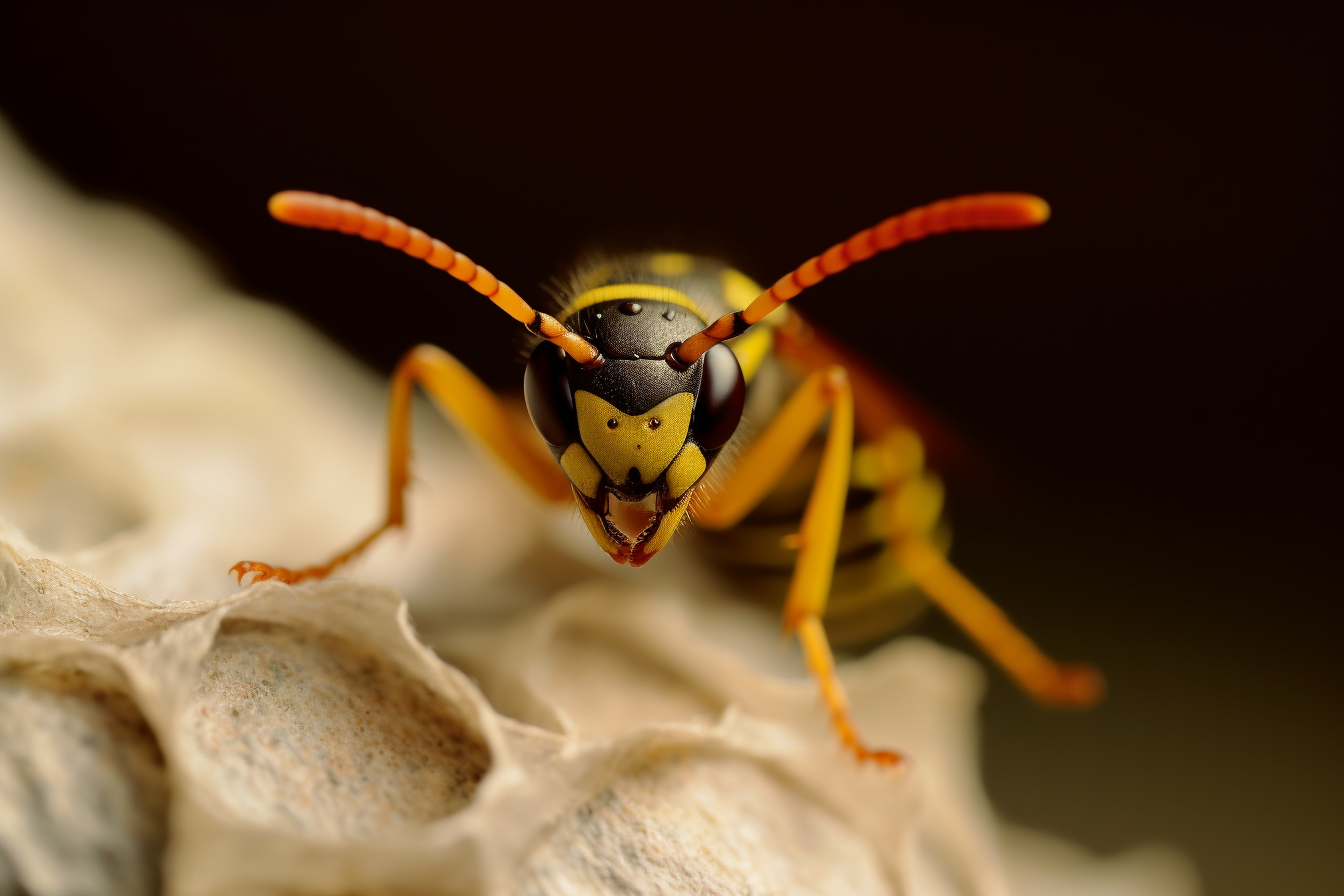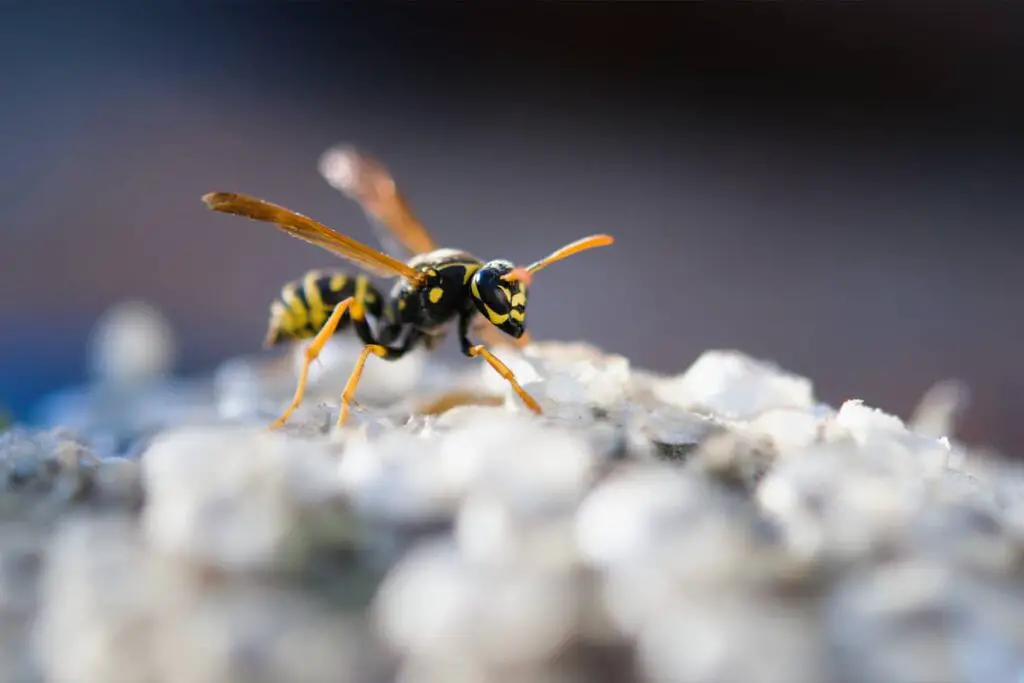
When it comes to dealing with wasps, it’s important to be able to detect when they’re angry to avoid any unpleasant encounters. Luckily there are some clear signs to look for which can help you recognize when a wasp is likely to attack, so you can take necessary precautions and maintain a safe distance.
When a wasp is angry or agitated it will flap its wings rapidly, bend its antennae back and forward, and raise its body off the ground. If you notice any of these signs, you should steer clear as the wasp is letting you know its perceiving you as a threat.
Being aware of these signs can help you avoid painful stings and stay safe around these fascinating but oftentimes aggressive creatures.
Identifying Wasp Species
I have had experience with a large number of different species of wasp, and each’s appearance can differs significantly, making it possible to identify them by specific distinctive characteristics. Many wasps have striking colors, like the yellowjackets, which usually exhibit black and yellow patterns on their body. They can grow up to a maximum size of around 0.5 inches and are quite common in North America (Garden Betty).
Digger wasps are generally darker with bright yellow or orange markings on their abdomens. They are solitary creatures and are usually found around healthy gardens, preying on grubs that feed on plants (wikiHow). Another interesting fact about wasps is that depending on the species, wasp legs can be black, orange, or yellow, with many wasps having bi-colored legs, which helps in identifying a specific type..
Paper wasps have a unique set of features as well. Their nests are small and made from paper-like materials and often suspended from a single stalk. These nests can be found in protected spaces, such as under porch railings or in the eaves of picnic shelters. Paper wasps display a range of colors like orange, red-brown, burgundy, and even some with black and yellow stripes (The Student Conservation Association).
Being aware of these physical traits, colors, and nesting habits can significantly help in identifying a particular wasp species, which in turn assists in understanding their behavior, including signs of aggression. Some species are infamous for their aggressive stance towards perceived intruders into their space.
Understanding Wasp Body Language
Discerning a wasp’s emotional state can help prevent unwanted stings and encounters. In this section, let’s discuss some key elements of wasp body language, specifically agitated movement, defensive postures, and warning buzzing.
Agitated Movement
One of the primary indicators of an angry wasp is the way its antennae move. When they are bent back and forth, it signals that the wasp is agitated or angry. Additionally, I’ve noticed that a rapidly flapping set of wings can also imply irritability or aggression from the wasp. This is important to observe at a safe distance, because getting too close to an agitated wasp is a recipe for disaster!
Defensive Postures
A wasp assuming an aggressive, defensive posture typically raises its body slightly off the ground. This position might indicate that the wasp is on alert and ready to defend itself or its nest if it feels threatened. In this stance, the wasp is more likely to attack if it perceives any further provocation (Pest Phobia).
Warning Buzzing
Listening to the sounds wasps make is another way I can understand their intentions. Wasps, quite talkative in nature, communicate with one another and their environment using various noises. An individual wasp might emit buzzing, wing fanning, and stridulations while flying. And when in distress or agitated, the buzzing tends to become more pronounced, signaling potential aggression or a warning to others.
By monitoring these cues in wasp body language you can better gauge their emotional state and react accordingly to avoid any unwanted confrontations or stings. Familiarizing yourself with these behaviors is essential in ensuring your safety if you plan to coexist with these social insects.

Factors Leading to Aggression
Nest Protection
As a forager and protector of their colony, nest protection is the primary reason for aggressive behavior in wasps. They are territorial creatures, and will act defensively if they perceive a potential threat to their home or fellow wasps. Even if you unintentionally approach their nests, you may unintentionally trigger their defensive instincts, resulting in aggressive displays as outlined above.
Food Scarcity
During certain times of the year, particularly in the fall, food tends to become more scarce. This can lead to increased aggression in wasps as hunger intensifies. Late-season wasps may become progressively more desperate as food disappears and their colonies start to starve, according to Forest Wildlife.
When food is limited, they may also feel the need to aggressively protect valuable food sources from competitors or forage more assertively to provide for their colonies.
Environmental Stressors
Another factor contributing to wasp aggression are environmental stressors. These can include changes in temperature, humidity, or other elements that make them feel uncomfortable or threatened. These stressors can cause wasps to exhibit more aggressive behavior as they attempt to adapt to their surroundings or protect themselves and their colonies from perceived threats.
A wasp’s aggression can be attributed to several factors, including nest protection, food scarcity, and environmental stressors. Knowing these triggers and maintaining a respectful distance can help prevent accidental disturbances and minimize conflict with these fascinating creatures.
Avoiding Wasp Attacks
In order to avoid wasp attacks it’s important to understand how to identify when a wasp is angry and take the necessary precautions. In this section, I’ll discuss different ways to prevent wasp attacks, including keeping a safe distance, proper attire, and reducing attractions.
Keeping a Safe Distance
One of the best ways to avoid angry wasps is by simply keeping a safe distance from them. Wasps tend to get aggressive when they feel threatened or when their nests are disturbed. If you spot a wasp nest, avoid getting too close and try to warn others about its presence. If you happen to come across a wasp, remain calm and move slowly away from it without making any sudden movements that might provoke it.
Proper Attire
The clothes you wear can also play a role in preventing wasp attacks. It’s advisable to wear light-colored clothing, as wasps are less attracted to pale shades than they are to bright, vibrant colors. According to The Guardian, wearing white or other light hues can help deter wasps from approaching you. Additionally, ensure that your clothing is snug and covers most of your skin to minimize the chances of a wasp getting too close.
Reducing Attractions
Being mindful of the things that attract wasps is essential in avoiding wasp attacks. Here are a few key steps to follow:
- Avoid wearing strong perfumes or scented lotions, as the sweet smell may attract wasps.
- Be cautious when consuming food and beverages outdoors, especially sweet or fruity items, as the scent can draw wasps to you.
- Keep garbage cans sealed and clean up any food residue in your outdoor eating areas.
By implementing these strategies, you can greatly reduce your chances of encountering an angry wasp and experiencing a painful sting.
Dealing with Stings
Immediate First Aid
When I get stung by a wasp, the first thing I do is remove the stinger, if present, by gently scraping it away using a credit card or my fingernail. Avoid using tweezers, as they can squeeze more venom into the skin. Then, I gently wash the sting area with soap and water to prevent infection.
Next, I apply a cold pack or ice to the affected area to help reduce pain and swelling. I make sure to wrap the ice in a cloth or towel to protect my skin from frostbite. Keeping the area elevated also helps minimize swelling.
Symptom Monitoring
After the initial first aid, I keep an eye on the symptoms of the wasp sting. In my experience mild reactions usually involve pain, redness, and swelling at the sting site. Over-the-counter pain relievers, such as ibuprofen, and antihistamines, like Benadryl, can help manage these symptoms.
Applying a topical cream or gel containing hydrocortisone can also relieve itching and inflammation. I make sure to keep the area clean and avoid scratching to prevent infection. This can be easier said than done sometimes, because the inflamed area can get quite itchy.
If you experience a large local reaction with swelling that extends beyond the sting site, continue to take antihistamines and monitor your symptoms. In most cases, the swelling will gradually subside within a few days.
When to Seek Medical Attention
It’s crucial for everyone to be aware of the signs of an allergic reaction to wasp stings. According to Verywell Health, symptoms of an allergic reaction may include swelling of the throat, lips, mouth, and tongue, trouble breathing, hives, and unconsciousness. Anaphylaxis, a life-threatening allergic reaction, can occur without warning.
If you or someone you’re with experiences any of these severe allergic reaction symptoms, seek immediate medical attention. Additionally, if the sting site becomes infected, characterized by increased pain, redness, and pus, a visit to a healthcare provider is necessary for proper treatment.
Driven by a passion for those tiny creatures that rule our world, we at Bug Domain strive to be your go-to resource for information on insects.




